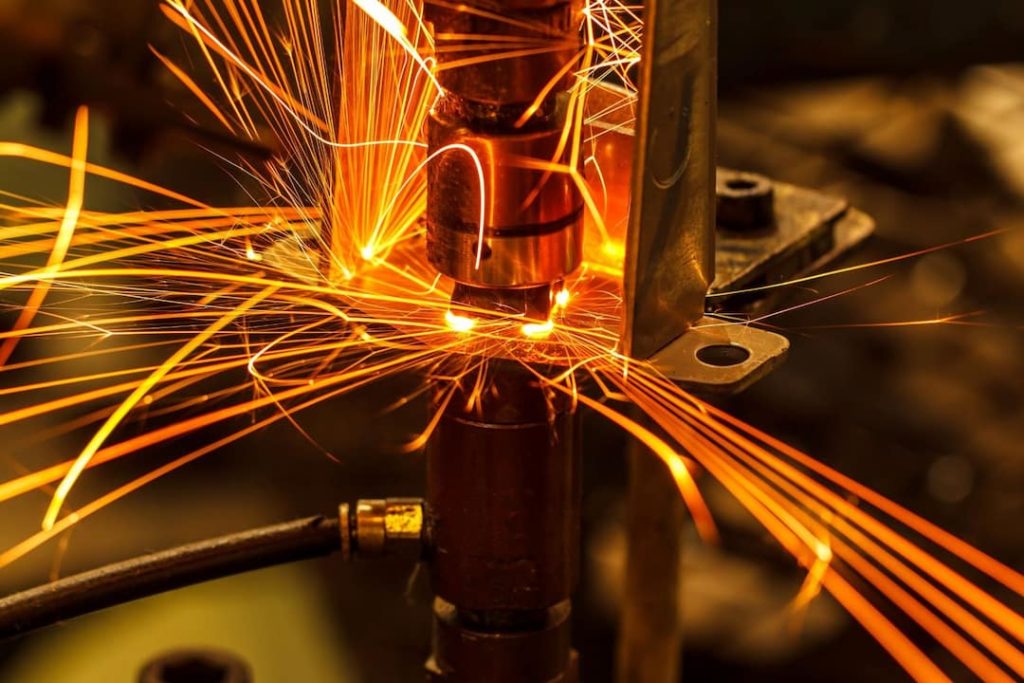In many ways, knowing how to use a spot welder properly is the cornerstone of successful welding. Not only does it offer precision and accuracy that other welders can’t match, but it also produces high-strength results in even the toughest applications.
Table of Contents
As a professional or hobbyist welder, thoroughly understanding how to handle and make the most of this powerful tool is essential to achieving quality work. In this post, we'll outline what you need to know about setting up your spot weld and give you tips for getting optimal performance from every weld you produce.
So whether you're just starting with welding or an experienced pro looking to hone your skills, read on for valuable insight into one of all welders' must-have tools!
Key Takeaways
- Using two copper electrodes to hold metal or steel joints is called spot welding
- When two pieces of copper are heated, it results in a melt that joins the required metal.
- Make sure there are no combustible items or other dangers near the area where you will be welding.
- Spot welding is quick and simple to use, and it has enough strength to form durable joins in a variety of materials.
What is Spot Welding?
Spot welding is resistance welding that joins two or more metal sheets together. In spot welding, the heat to form the weld comes from high electrical resistance generated across the interface between the two pieces of metal being joined. Unlike MIG or TIG welding, spot welding does not require a shielding gas to protect the weld.
The materials are connected by placing them in contact with a jig and then passing an electric current between them. The current creates intense heat, which melts the metal and forms a bond between the two pieces of metal.
Spot welding creates strong joints and can be used on many different metals, including galvanized steel, stainless steel, aluminum, copper, brass, and nickel alloys.
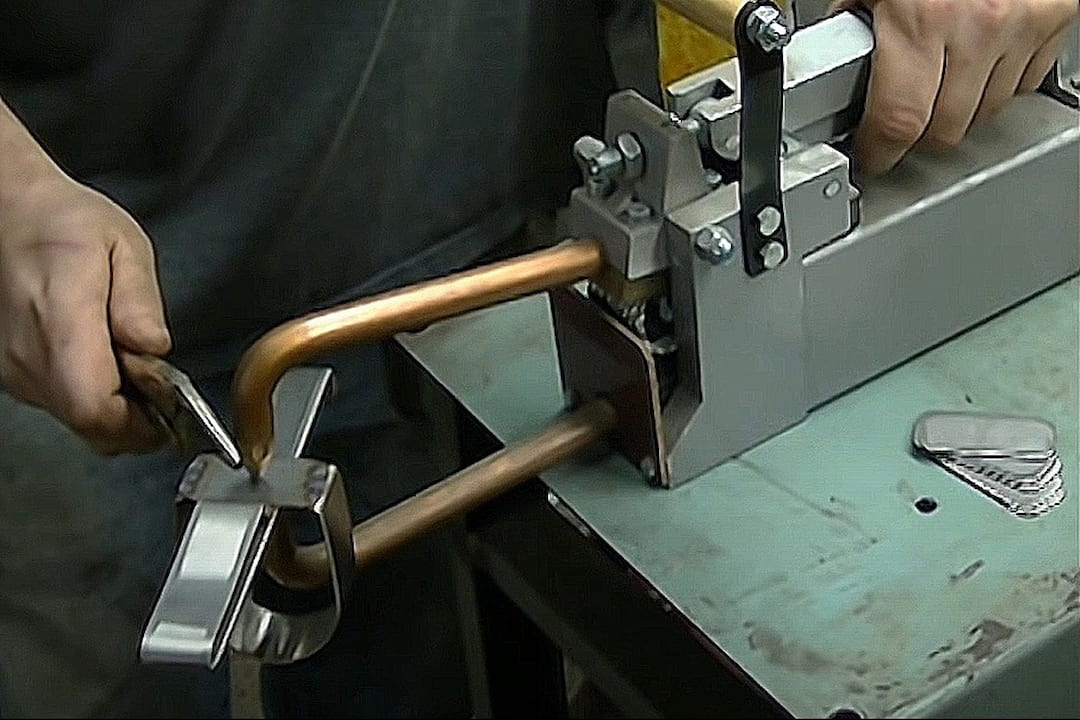
How to Use a Spot Welder?
Using a spot welder is easy once the setup and safety precautions have been taken. First, ensure that the area where you will be welding is free from flammable materials and other hazards. Next, connect your welder's positive and negative terminals to the power source and then adjust the settings on your machine to the desired welding work.
Depending on your machine and what sheet metal you are working with, these settings may include current, voltage, pressure, and time. Once the settings have been adjusted, and your metal pieces are securely placed within the jig, it’s time to start welding steel.
Hold down the trigger of the welding tip and watch as the current passes through your metals, creating intense heat that forms a strong bond between them. After welding, please turn off the machine and allow it to cool completely before handling or storing.
Spot welding is powerful enough to create permanent joints in many different materials while being relatively quick and easy to use. With the proper setup and safety precautions, resistance spot welding can use strong, permanent bonds with minimal effort. Follow all instructions when using a spot welder for safe and effective results. There are no rods to think about as with industrial, professional or portable stick welders.
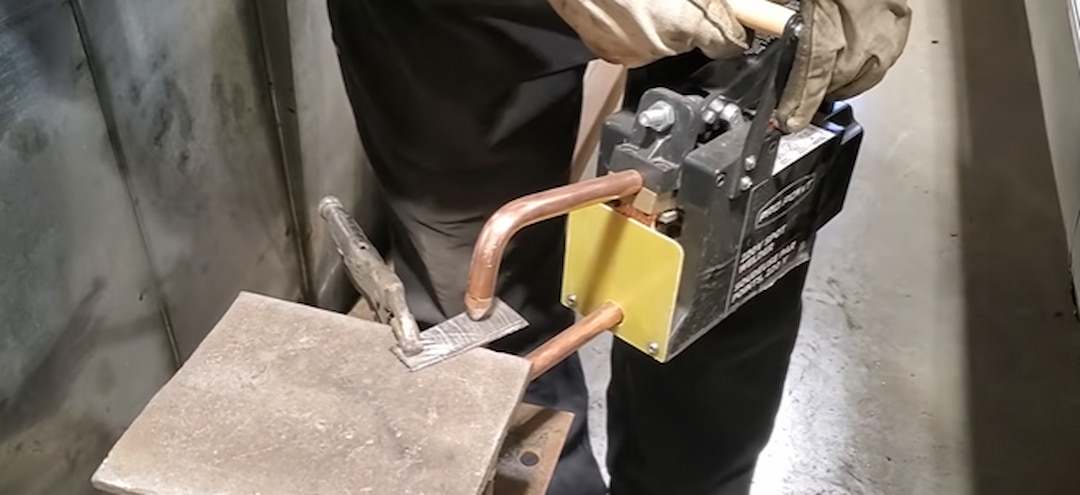
Spot Welds Variables
The process requires several variables: current, force, electrode geometry, and welding electrodes wear rate.
- The current of the spot welder is used to generate heat and should be appropriate for the material being welded, typically ranging from 2-10 KA, and you should be able to maintain this.
- The force acts as a stabilizing force on the electrodes, providing consistent contact between them and the materials being welded, so choosing the correct electrode is a critical thing for you.
- The geometry of the electrodes also plays an important role in the resistance spot welding process. The size and shape of the electrodes, along with the form of contact between them, are important factors in how efficiently the heat is transferred to create a strong bond.
- Electrode wear rate should also be monitored; if too much material is worn away by welding, it could reduce its effectiveness or even cause welds to fail.
Materials Appropriate for Spot Welds
Spot welding can be used on various metals, including low-carbon steel, galvanized steel, spot weld aluminum, copper alloys, brass, and nickel alloys. Hence, a variety of materials are available, which is a good thing for you if you are a spot welder.
The spot welding process is commonly used to join thin sheets but can also be used for thicker materials. It is especially useful in applications that require strong, reliable joints that can withstand large amounts of stress.
The spot welding process is also advantageous because it is relatively fast and produces minimal heat-affected zones (HAZ). This makes spot welding ideal for materials sensitive to heat or may be otherwise damaged by more traditional welding methods. The technique is highly automated and can be used in high-volume production settings.
Common Spot Welds Problems
Poorly designed joint: If the joint is not designed properly, it can cause issues with spot welding.
The joint design must allow proper electrical contact and heat dissipation between the two pieces of sheet metal.
Low current or voltage settings: Low current or voltage settings can lead to weak welds and insufficient joint penetration.
Poor quality material: Low-quality materials can cause problems when spot welding, as they may contain impurities or imperfections that interfere with the quality weld.
Dirty metal surfaces: If metal surfaces are dirty, oil or paint residue can reduce electrical conductivity and lead to a weaker weld. Proper cleaning and preparation of the sheet metal surfaces are important for successful spot weld.
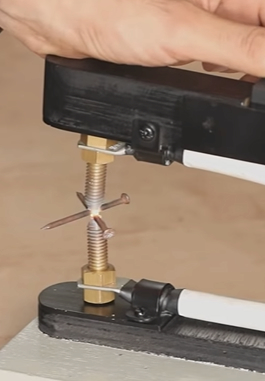
Poor grounding: Grounding problems can interfere with the electrical current and prevent effective welds. Ensuring that all equipment is properly grounded before beginning the process is important.
Warping or distortion: This can occur if too much heat is applied during the resistance spot welding process. It can also occur if the area around the joint becomes overheated due to insufficient ventilation or inadequate heat dissipation.
Poor welding technique: Similarly to welding defects which appear in MIG, TIG, stick or Flux Core welding, improper welding can lead to weak welds and an uneven surface finish. Following the manufacturer's instructions for spot weld is important, as improper technique can result in poor-quality welds.
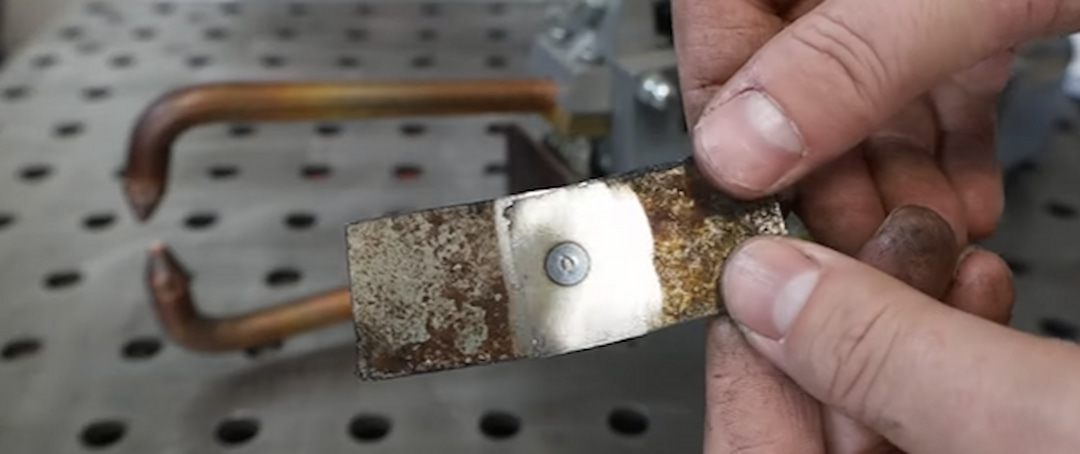
FAQs Related to Using a Spot Welder
Do Spot Welders use AC or DC?
Most spot welders use DC for welding, although some units are equipped with AC/DC inverters, allowing the user to switch between both. The type of metal being welded and its thickness will dictate the best-used type.
How do I prepare for a spot welder?
Before you begin spot weld, it is important to properly prepare the materials that will be welded. This includes cleaning any rust, dirt, or debris from both sides of the material and ensuring no gaps between the two pieces.
You should check for foreign objects between the workpieces as these can cause problems during welding. Once everything is prepared, it is time to set up the welder.
How do spot welders work?
Spot welders use two copper alloy electrodes to clamp the metal and pass a high-amperage current through the joint as these two electrodes produce electrical resistance that results in this welding. This current creates an electric arc that melts the metals at the point of contact, forming a strong bond between them. The electrodes are then opened and removed, leaving behind a permanent spot weld.
